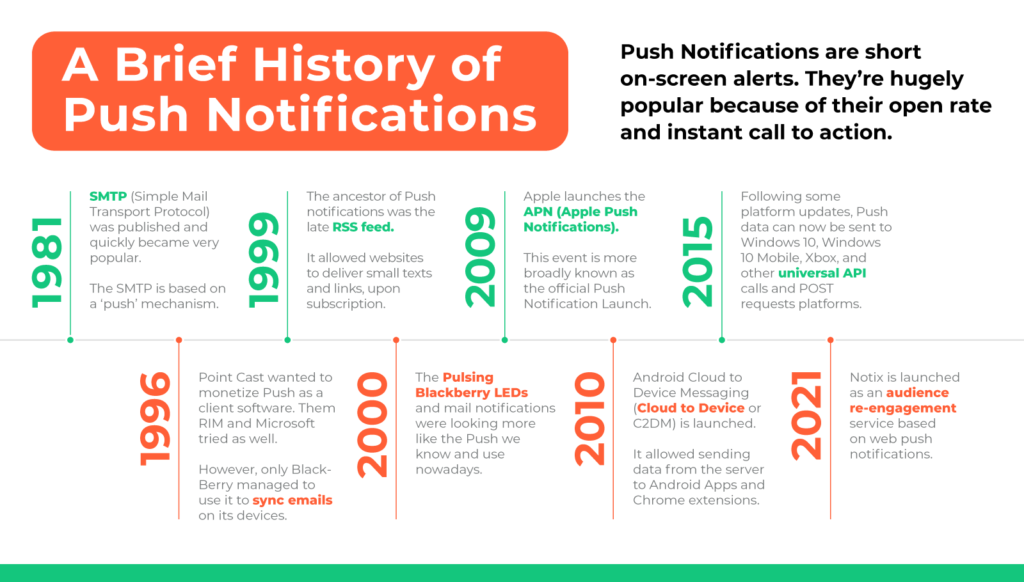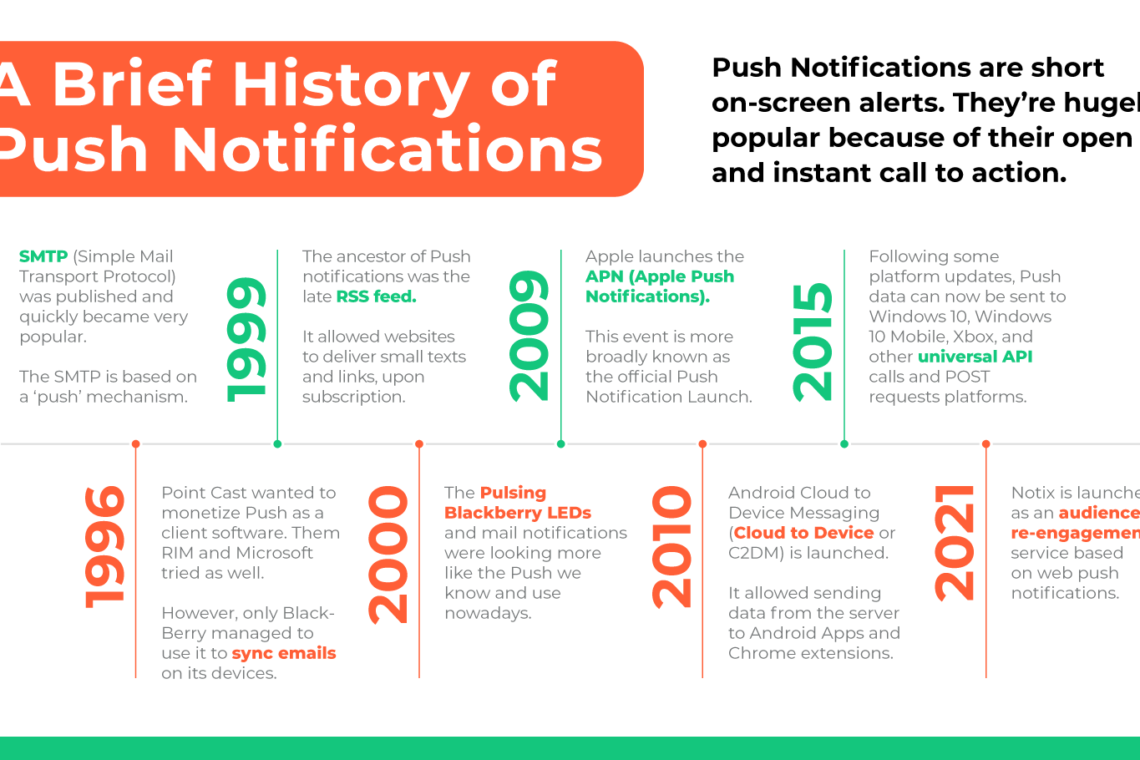
The notion of push notifications has been around since the dawn of the internet era, but they’ve only recently come into prominence as an efficient and cost-effective way of communicating with users. The history behind push notifications provide an important testament to how digital technology has evolved in terms of how we interact with each other and receive information.
In 1994, the World Wide Web’s email feature was first introduced allowing users to easily send messages back and forth over the web. This allowed for messages to be sent immediately rather than waiting for a response from a recipient. Soon thereafter, in 1997, MSN Messenger was released enabling users to chat online in real time. This was soon followed by AOL’s instant messaging service, and both technologies paved the way for push notifications on computers as people began to get used to receiving real-time updates.
In 2002, Steve Wellner created Apple’s notification system for OS X 10.4 which allowed users to know when new mail had arrived or their reminder calendar went off without having to actively check their individual accounts or applications each time. While this was seen as revolutionary at the time, it still required manual user input in order to make use of its features by physically clicking on a “notification center” icon in order to view them all at once versus popping up automatically each time something happened.
In 2009, Apple launched Apple Push Notification Service (APNS), which enabled app developers to send notifications directly to a user’s iPhone or iPod instead of through email or another third-party service like SMS text messaging. For the first time ever, developers could send personalized text and multimedia messages directly from their app onto a user’s device with no intermediary at all given how iOS didn’t require an open app on the device for APNS to work properly – something Microsoft had tried unsuccessfully with its own Instant Messaging platform three years prior. APNS was quickly adopted by third party companies including: Facebook, Twitter, eBay and Yelp who jumped at the opportunity for more direct access into potential users’ phones instead of relying on sluggish mobile web browsers.
Since then numerous mobile OS platforms have adopted similar push notification models for their own apps including Google (Android), Microsoft (Windows Phone) and BlackBerry (BBOS 10), leading many people now consider it pretty much standard practice across most platforms today when it comes downing extended feature sets designed just for social media apps as they’re constantly getting updated or changed themselves over time anyways so staying informed via these types of automated systems is arguably more efficient than regularly checking each one manually yourself anytime something changes potentially outside your routine usage frequency ranges anyways anyways anyways even if you employed alerts/notifications setups beforehand such’s is offered nowadays when available that is…
These days there are many different ways companies can employ push notifications — whether it’s sending timely mobile offers based off location data detected from GPS signals or simply alerting users about new content posted onto their personal feed — through various APIs like Urban Airship’s powerful suite of tools geared towards making sure every message stays relevant regardless if it’s sent via iBeacon geo-fences API triggers from anywhere worldwide. All this said as well such depending upon where you live some nations may still employ micro email services such MailChimp delivery lists that do let customers decide what type announcements (& more!) they’d like receive back; yet ultimately it’ll always largely come down personal preference regarding what type strategies work best depending particular individual needs wants & scenarios at hand too thanks much:)
